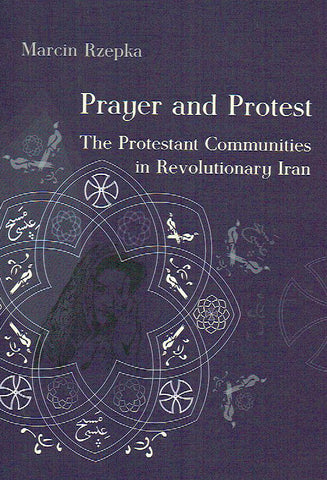Prayer and Protest, The Protestant Communities in Revolutionary Iran
25,00 $
ISBN: 978-83-7643-136-9
Description: softcover, 236 pp. (20,5x14,5 cm), figs.
Condition: new
Weight: 305g.
Marcin Rzepka, Prayer and Protest, The Protestant Communities in Revolutionary Iran, Krakow 2017
The Iranian Revolution, which treated Islam as the main feature of the newly constructed state identity, redefined the social, cultural, and political scenes by putting the so-called ‘religious minorities’ in the new order. Minorities such as Christians, Zoroastrians, and Jews obtained both rights (granted by the new Constitution) and limitations. Concerning Christians, the constitutional rights were preserved to the ‘ethnic’ Christians: Armenians and Assyrians only. The task of the book is to present Protestant communities in the time of revolution as well as the reactions and attitudes of both missionaries and Iranians to the revolutionary events. For many missionaries, the revolution led to the end of their missions, obliterating. There are, at least, two different narratives of the revolution among Iranian Protestants and missionaries that originated in very different perspectives on Iranian history. When studying American or British missionaries, we should ask how did the Protestants perceived the revolutionary events. Did they believe that the new regime would secure their presence in the country? The missionary perception of Islam in general and Iran in particular in the context of the revolution seems to be the starting point for studies of Protestantism in Iran. However, the problem with the Protestant churches and communities is much more complex. The missionary impact is seen in the growing indigenous Iranian churches. Of course, the historical development of Protestantism gave birth to different churches with their own concepts of worship, community, and leadership. Three of them are included in this study: Anglican, Presbyterian, and Pentecostal. This book is divided into three chapters. The first depicts the historical spectrum of the presence and activity of the Protestant churches in Iran with a special emphasis on the 1970s, when expatriate British and American communities in Iran inspired church strategies but also influenced the way in which Iranian authorities perceived the Protestant churches during and after the revolution. The second chapter is focused on the years between 1978 and 1981 and analyses the situation of the churches on two levels: internal and external, with special reference to the Iranian hostage crisis. The end of the chapter brings some considerations on ‘traveling’ memories of the Christians from the time of the revolution focusing on Bishop Hassan Dehqani-Tafti, who proposed theoretical fundaments for re-thinking the Iranian Christian identity. The concept of ‘Persian-speaking Christians’ appears on the book’s pages many times. The third chapter follows the events after 1981 to describe the appearance of exiled Iranian Protestant communities and mechanisms for the adoption and assimilation of revolutionary ideas among the church members. In a way, it returns to the problem of geography underlining the dynamics of spread the Christian message through the Internet and satellite television, making Iranian Christianity really a global phenomenon.

